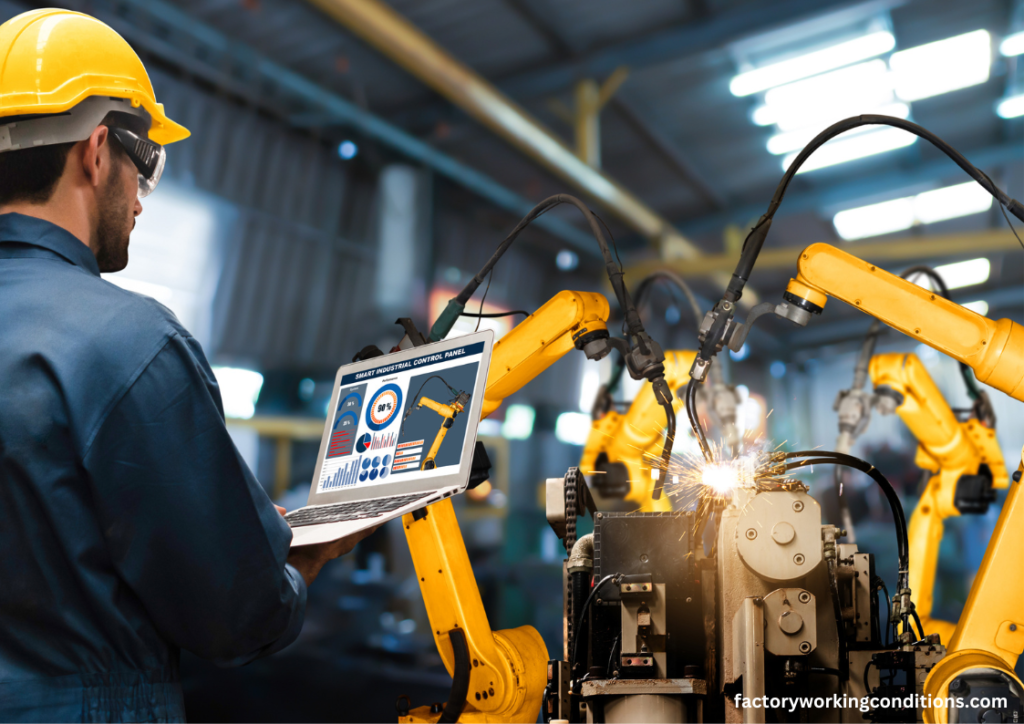
In the fast-paced world of modern manufacturing, digital technologies have become a driving force behind efficiency, productivity, and innovation. However, not all workers in the manufacturing sector have equal access to these technologies, resulting in what is often referred to as the digital divide. This divide, characterized by disparities in digital infrastructure and skills, has far-reaching implications for worker conditions in the industry.
This article will explore the effects of the digital divide on manufacturing employees, shedding light on the challenges and opportunities it presents, from job roles and skills development to safety and the overall work environment.
The Digital Divide in Manufacturing
The digital gap in manufacturing is a complex issue. It means some places have better access to advanced technologies than others. These imbalances can be due to various factors, such as location, size of the company, and financial resources.
Job Roles and Automation
One of the most immediate impacts of the digital divide is seen in the job roles within manufacturing. As digital technologies advance, they lead to automation and the introduction of new roles that require digital skills. Workers in technologically advanced manufacturing facilities often enjoy improved job roles that require creativity, problem-solving, and technical proficiency. In contrast, those in less advanced facilities may be limited to manual, repetitive tasks.
This disparity in job roles can lead to stagnation and a lack of personal and professional growth opportunities among workers in less advanced facilities. It also puts them at risk of job displacement as automation advances. This growing gap in job roles can contribute to worker dissatisfaction and decreased overall well-being.
Skills Development
Access to digital technologies affects job roles and workers’ ability to acquire relevant skills. In technologically advanced manufacturing facilities, employees are exposed to digital tools, automation, and data analysis, facilitating skill development. They are more likely to receive training and support in adapting to new technologies, fostering their career growth and job security.
In contrast, workers in less technologically advanced facilities may need help accessing adequate training and resources for skill development. This lack of access can leave them ill-prepared for the changing demands of the industry, reducing their overall job satisfaction and well-being. Thus, the digital divide exacerbates the disparity in skills development and perpetuates inequalities within the manufacturing workforce.
Safety
Worker safety is another crucial aspect influenced by the digital divide. Advanced manufacturing facilities often incorporate digital technologies for safety monitoring, hazard prevention, and real-time data analysis. These technologies can reduce accidents and enhance worker safety.
In contrast, less advanced facilities may rely on outdated safety protocols and need access to digital safety tools. This situation places workers in these facilities at a higher risk of accidents, injuries, and health issues. In this context, the digital divide can lead to stark differences in worker safety conditions and overall well-being.
Overall Work Environment
The digital divide in manufacturing also impacts the overall work environment. Facilities with advanced digital integration are often more efficient, leading to increased productivity, reduced waste, and better working conditions. These environments are cleaner, quieter, and more organized, which can positively influence employee morale and well-being.
On the other hand, manufacturing facilities that lag in digital adoption may struggle with inefficiencies, downtime, and suboptimal working conditions. This can result in an increased workload and more stress for employees. Over time, such work environments can negatively impact workers’ mental and physical health, contributing to lower job satisfaction and reduced well-being.
Opportunities for Bridging the Digital Divide
While the digital divide in manufacturing presents significant challenges, it also offers opportunities for positive change and improvement in worker conditions.
Training and Education
One key opportunity is to invest in training and education programs that bridge the digital skills gap. Manufacturing companies can partner with local educational institutions and vocational training centers to provide workers with access to digital skills training. Offering digital literacy programs can help employees develop the skills they need to adapt to an increasingly digital workplace.
Digital Inclusion Initiatives
Governments, industry associations, and non-profit organizations can play a significant role in promoting digital inclusion in the manufacturing sector. This includes providing financial incentives, grants, or subsidies to help smaller manufacturers invest in digital technologies. Additionally, initiatives can be launched to ensure that even remote or less developed areas can access reliable digital infrastructure.
Collaboration and Knowledge Sharing
Manufacturing companies can collaborate to share best practices and knowledge in digital integration. Such collaboration can help smaller, less advanced facilities catch up with industry leaders, reducing the digital divide. Companies that have already implemented advanced digital technologies can provide guidance, support, and mentorship to others.
